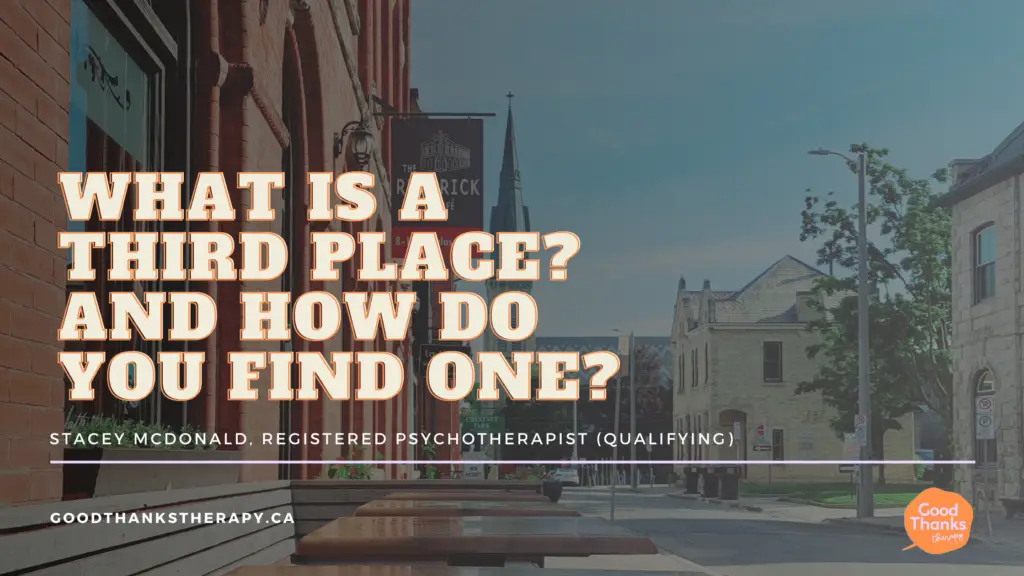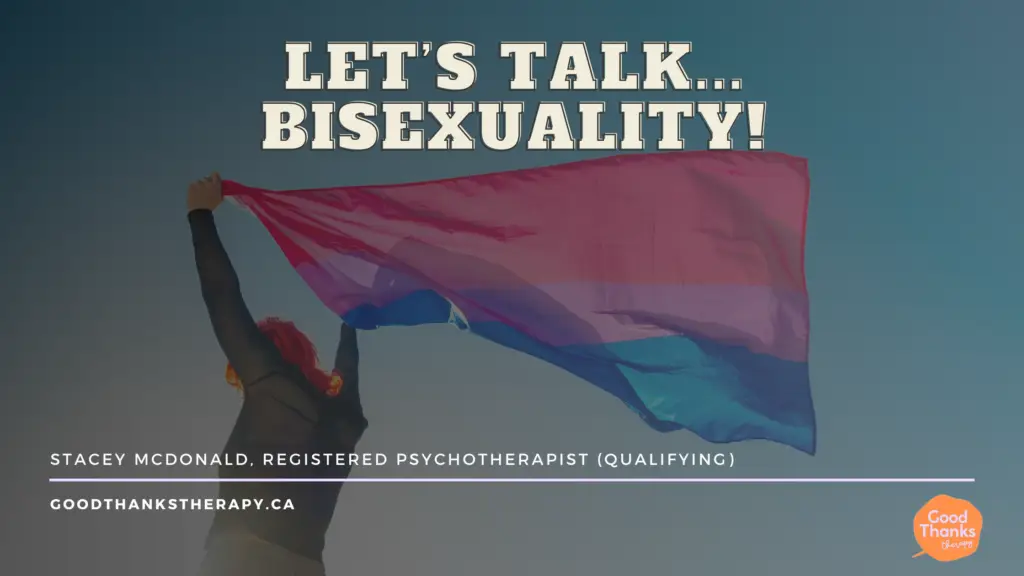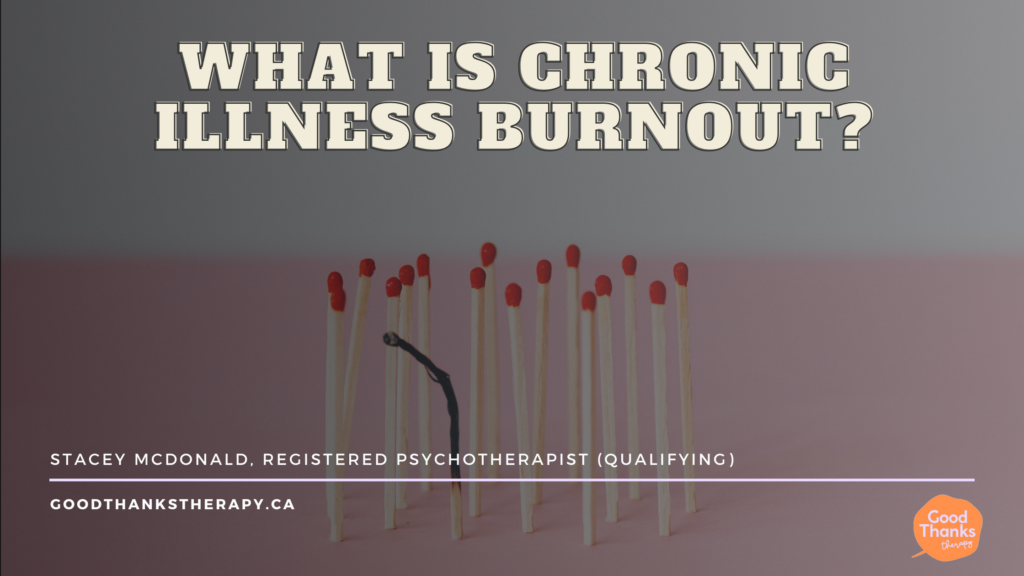Do you have a space where you’re considered a “regular?” Perhaps all the baristas at your local cafe know your order, or friends always know they can find you at a local pub on Thursdays for trivia night. There’s something so comforting about these kinds of places and the familiar faces of those you connect with when you’re in them.
We often don’t spend much time thinking about the role these places play in our lives, our mental health, and our routines, but the importance of them is something that’s been overlooked in recent years. So what are these spaces, and why are they important?

What is a Third Place/Third Space?
Sociologist Ray Oldenburg created the term “third place” to describe the spaces outside of work and home where people go to connect with their community. In Oldenburg’s conceptualization, a third place has eight characteristics:
- It’s neutral: there’s no obligation to be there.
- Leveling: societal status is not important or a condition of sharing the space.
- Conversation: while it’s not required to be the only activity, there is some opportunity for playful, happy, light-hearted conversation.
- Accessible & accommodating: allowing ease of use for a range of needs—and making those using the space feel like their needs are fulfilled.
- Regulars: regular users/occupants that help set the tone of the space and contribute to the welcoming vibe.
- Low profile: often simple, wholesome, and cozy, creating a comfortable and accepting place for all types of individuals from all backgrounds.
- Playful: no feelings of tension or hostility; a space where witty, playful, and kind conversation is valued.
- Sense of belonging: a home away from home with similar feelings of warmth, possession, and belonging.
These spaces may look slightly different depending on where you are in the world, but historically, third spaces have existed in all cultures, from teahouses, cafes, and restaurants to ancient Greek agora’s (public squares).
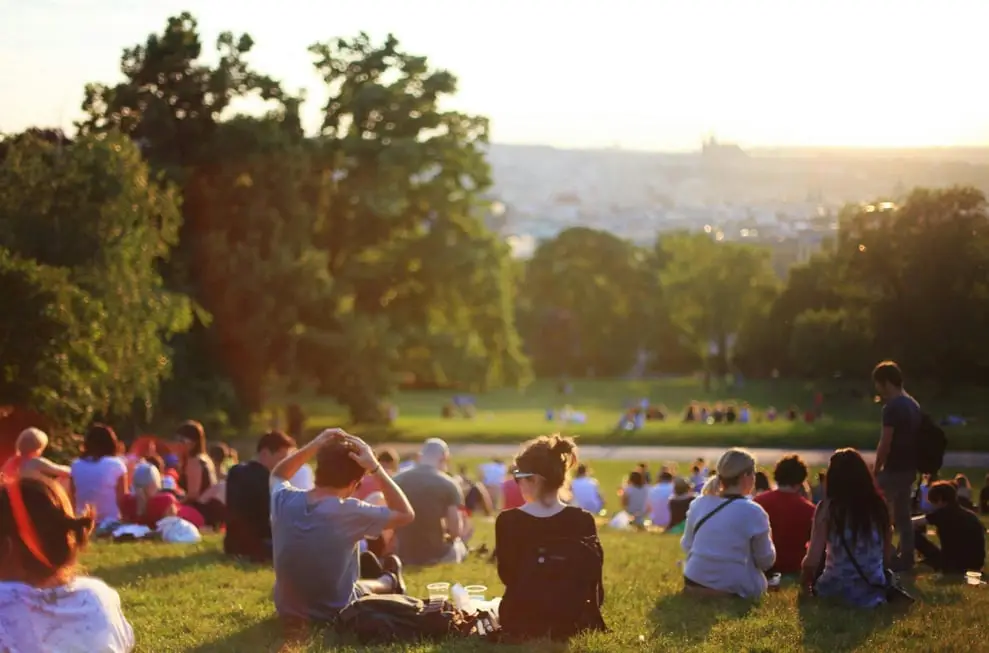
What Happened to Third Places?
I don’t think it’s any surprise that the way we connect and communicate with others has drastically shifted in the decades since Oldenburg coined the term. We’ve moved from meeting potential partners at events to swiping on apps. So many of our friendships have shifted online and consist of likes and sending memes on social media. Even our work life has seen a huge shift to remote work. While there are benefits to many of these changes, they have also effectively removed the natural inclination to spend time outside of our homes and workplaces.
If traditional “third places” have become less common or, in some cases, have shifted entirely online, where do you go to explore or connect with parts of our identity that aren’t related to your home and work responsibilities?
Transition to Digital Spaces
The transition to digital spaces for socializing and connection has its pros and cons. For some, the internet allowed them to find their “people” in a way that wasn’t limited to proximity. Looking for others with your niche interests? Support groups for your chronic illness? The internet paved the way for people to find spaces where they could explore all parts of their identities and connect with like-minded people.
However, so much of our lives have shifted online now that we’ve lost something important. A space to go to avoid the sense of “cabin fever” that may creep over us when we work from home, a place for hobbies, somewhere that helps us separate who we are from our daily responsibilities. This takes a huge toll on our mental (and physical) health, resulting in isolation, loneliness, depression, and anxiety.
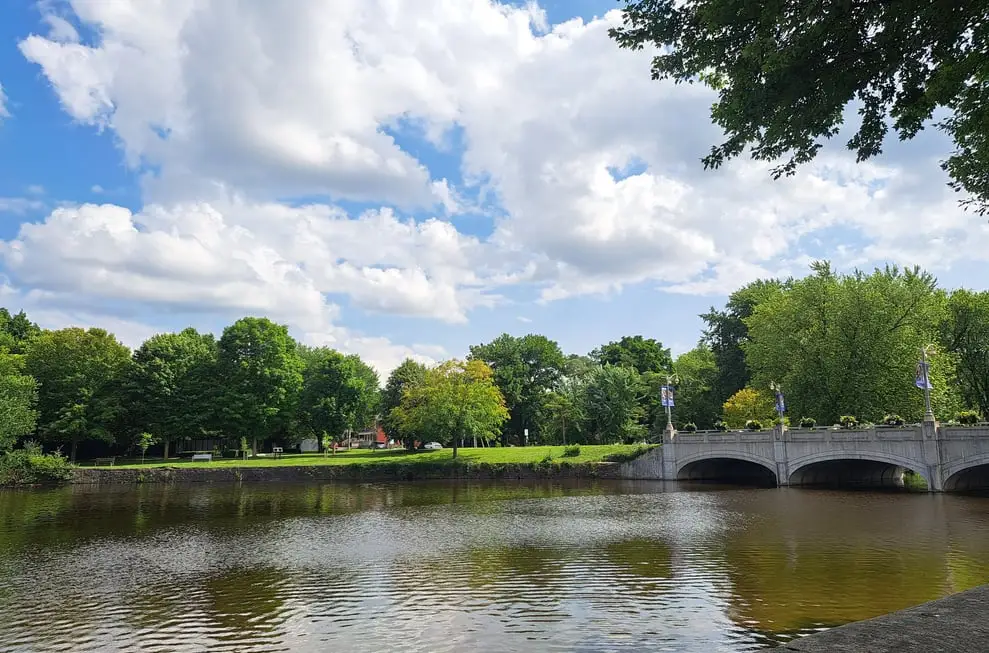
Financial Barriers
If digital spaces aren’t your thing and you want to find your “third space,” you may be faced with the reality of financial barriers. The cost-of-living crisis has hit most of us hard in the last few years, and that goes for businesses as well. Places that are traditionally popular third places may have become less accessible financially for you or even closed down entirely.
Accessibility for all is a main characteristic of Oldenburg’s third place, but the fact is, that’s not viable for many businesses in this day and age. That isn’t to say that there aren’t spaces that are free that can be enjoyed in the same way, but there is something to be said for losing a third place like a local cafe or pub because it no longer fits in your budget or has closed down, and the impact that has on your desire to find new places to connect to.
Why is Having a Third Place Important?
So, what’s the big deal about third place anyway? If you can work, socialize, date, and do just about everything else you could ever want to do in a day all online, why do you need to go out and find yourself a public place to connect? Great question!
While I’m all for that homebody life, there’s plenty of research out there that notes the impact of a lack of social connections on mental health. This can show up in many ways, from depression and loneliness to a feeling of increased stress that won’t go away despite what you do.
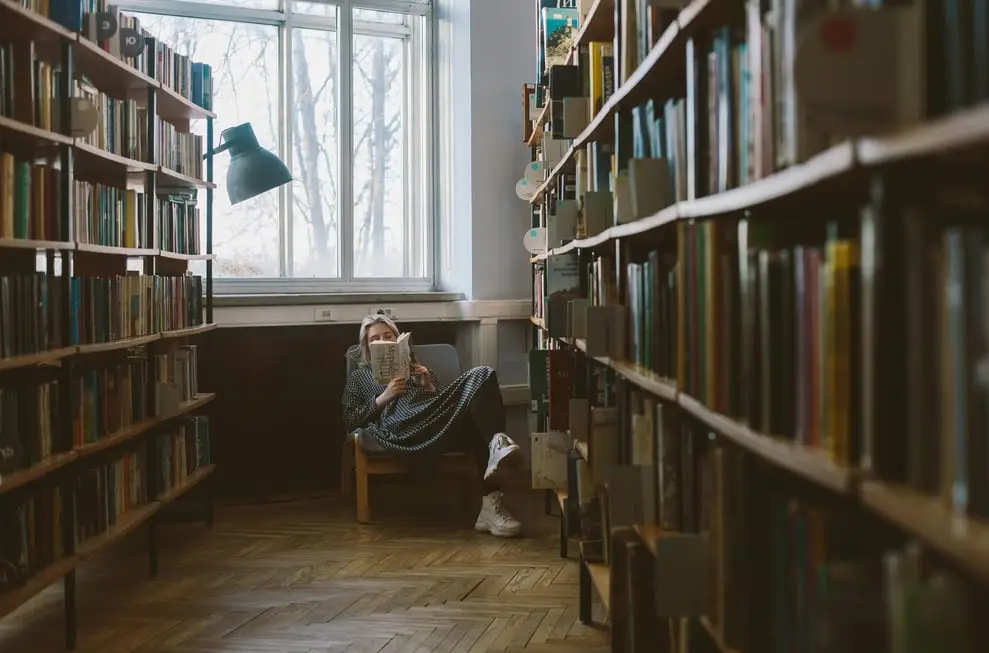
Community spaces allow us to feel safe— to show up however we are with no expectations. We come to gain a sense of psychological ownership over the third places we frequent—feeling a part of something and having it become a part of our identity in return. That sense of being a “regular,” where someone knows your name, your order, or even just your face, fuels connection. You know when you don’t show up for your usual 8am coffee that someone will take notice. This seemingly simple thing can have a huge impact on how we feel about ourselves and others.
While it may sound like this connection brings with it the expectation of being talkative and engaged with others at all times, that couldn’t be further from the truth. Yeah, if that’s what we need, these places offer us a comfortable place to socialize, but if we need alone time or a quiet place to just be, they offer that too. Connection doesn’t have to come with the expectation of conversation; sometimes it’s just nice to have a space where you can find solitude but not loneliness.
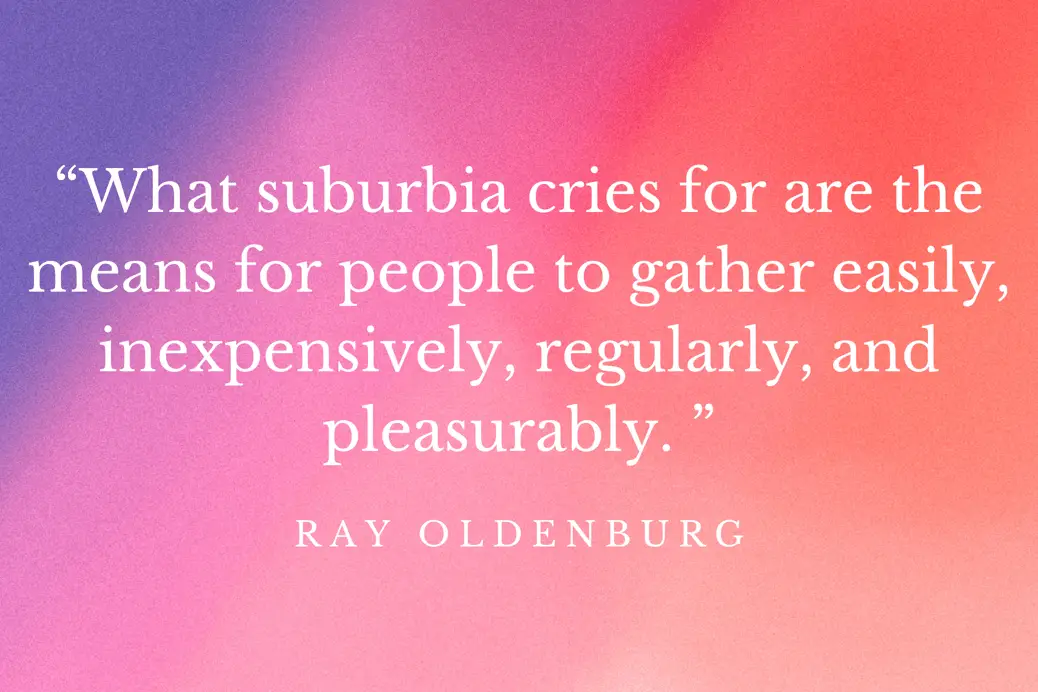
How Do You Find a Third Place?
After reading this, have you been able to identify your third place? If not, you may be wondering how you can find one. You may need to experiment and find what “clicks” for you, but here are some places to start:
- Coffee shops
- Libraries
- Gyms
- Parks
- Bars and Pubs (especially if they have regular events like trivia!)
- Dog parks
- Places you volunteer
- Gardens and patios
- Recreation centers
- Playgrounds (for families and children)
- Support groups
- Book clubs
- Comic Book Stores
- Churches
- Beaches
- Common areas at your college/university
- Classes (pottery, photography, pilates, etc)
- Co-working spaces
If you don’t already have a third place, consider exploring your neighbourhood and trying out some of the suggestions above. In a world that’s become increasingly individualistic and online, these spaces help us feel a part of a community—somewhere that reminds us that people care. If you’re struggling with feelings of loneliness and depression or need support as you explore your values and interests, we offer virtual therapy in Ontario and FREE 20-minute consultations.
Want to keep learning?
The loss of THIRD PLACES & why you’re lonely | Third Place Theory Explained – Youtube Video
Searching for connection? Third places may be the solution – CBC Article
Why third places are essential to creating community in modern society – Very Well Mind Article

